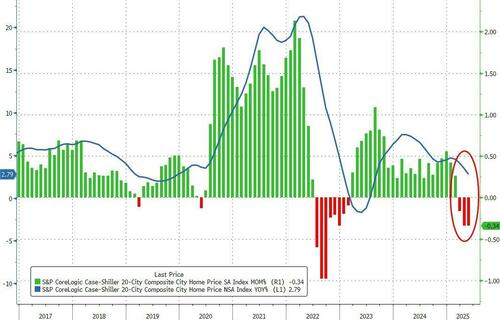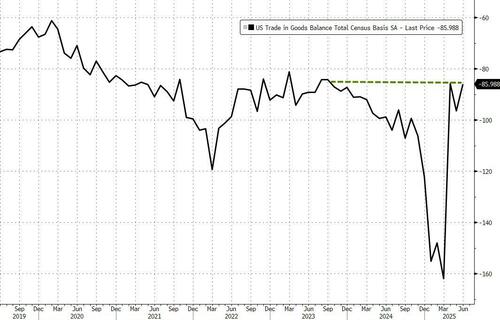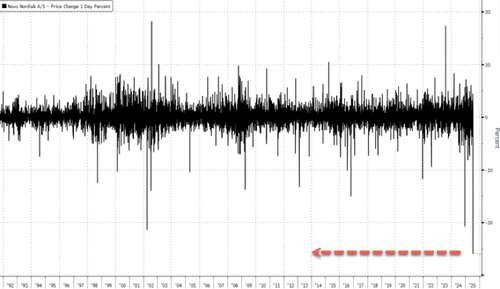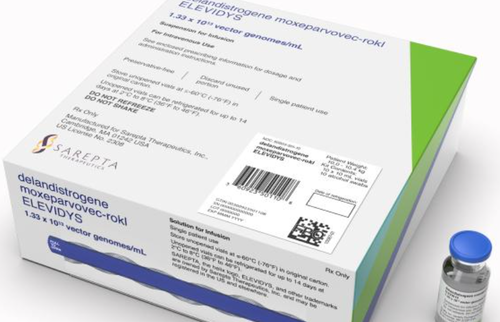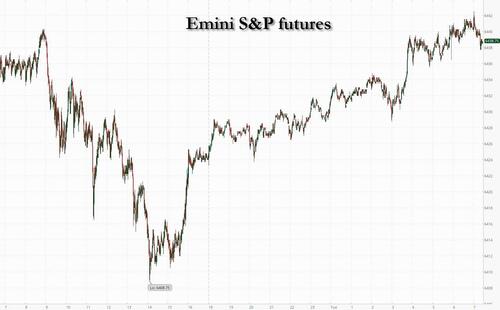What’s The Big Deal?
By Bas van Geffen, Senior Market Strategist at Rabobank
The European Union and the United States have reached a framework agreement on trade. President Trump took an hour out of his golf trip yesterday, to discuss “the biggest deal” with European Commission President Von der Leyen.
🚨BREAKING: President Trump lands EU trade deal:
– EU to purchase $750 billion in US and invest $600 billion in US
– EU to purchase a “vast amount” of military equipment
– EU opens up markets to US goods
– 15% reciprocal tariffs
Massive!! pic.twitter.com/cheSWDIMSJ
— Charlie Kirk (@charliekirk11) July 27, 2025
The European deal is in many ways similar to the one Japan struck last week. Most European goods will be subject to a 15% tariff. But, as we’ve seen before with these framework agreements, both sides do not seem to interpret that in exactly the same way. And there aren’t many details to go by, except for what the two leaders said. So what exactly is the big deal?
Both Trump and Von der Leyen agree that the trade agreement includes automobiles. That’s good news for the industry, which had been subject to a 25% sectoral tariff, and now essentially sees this being lowered as part of the deal. In return, “European countries will open their markets at zero tariffs,” said Trump.
Furthermore, airplanes and parts will be exempt from tariffs. And Von der Leyen said that pharmaceuticals and semiconductors are included in the 15% rate, which would shield them from even higher sectoral tariffs –up to 200%– President Trump has been threatening.
Yet, before the meeting with the EC President, Trump had told reporters that pharmaceuticals would not be part of any deal. Other US officials seemed to corroborate Von der Leyen’s narrative, but no final deal has been signed. So, there is perhaps still a small risk that Trump’s Section 232 tariffs on pharmaceuticals could weigh on the European, and particularly the Irish, economy – if any dispute about these sectoral tariffs does not sabotage the broader agreement.
Just like Japan, Brussels has effectively bought its way out of an even higher rate. The European Union will purchase $750 billion worth of US energy over the remainder of Trump’s term, which the continent needs anyway. The big question is whether that can even be achieved. In 2024, all energy flows from the US to the EU totalled only around $65bn. Even if Europe were to source all of its diesel and LNG from the US, this is a massive stretch – and would go against Europe’s agenda of diversifying suppliers for key resources.
The EU will also buy “vast amounts” of military equipment. Again, that is something Europe needs more of – although France and several other countries would rather see these weapons systems produced domestically.
But on top of that, the EU has also pledged to invest an additional $600 billion in the US. That’s a win for Trump whichever way you look at it. If European companies will invest more in US factories, that would still move some production out of the EU – just like tariffs might have. And if it’s the European or national governments, then these investments will have to compete with domestic investments as Brussels strives to regain strategic autonomy – at a time when governments’ budgets are already stretched thin.
Although the details are still sparse, the agreement between Trump and Von der Leyen does significantly lower the downside risk to the European economy. At the very least, the European Union will now not be hit by a 30% levy when the US reinstates its “reciprocal” tariffs. So, the deal should at least remove some of the uncertainty that plagued investors’ and corporates’ decision making.
Expect today’s trading to be a risk-on day, with equities futures in the green and corporate spreads tightening a tad at the open.
Yet, on a sectoral level there may still be some concerns about the agreed 15% rate, and particularly the asymmetry with the US. Von der Leyen acknowledged that the tariff would be “a challenge for some industries.” Indeed, the deal may erode some of their competitiveness versus US peers. However, other US trading partners have generally not managed to negotiate better terms than the EU deal. So, compared to other exporting nations, the impact on European competitiveness should be more limited.
The deal with Brussels leaves US-China relations as the biggest unknown for global trade. On Friday, Trump said “we have the confines of a deal with China,” as Treasury Secretary Bessent is due to meet the Chinese Vice Premier today.
Both parties will probably agree to extend the current tariffs – 30% on Chinese exports and 10% on US goods, on top of existing tariffs – at least until a potential meeting with President Trump and President Xi later in the year. According to Bessent, “now we can move on to discussing other matters in terms of bringing the economic relationship into balance.” This implies that the meeting will focus on the US’ other economic concerns, such as China’s industrial overcapacity, and limited domestic consumption.
Tyler Durden
Mon, 07/28/2025 – 13:05


